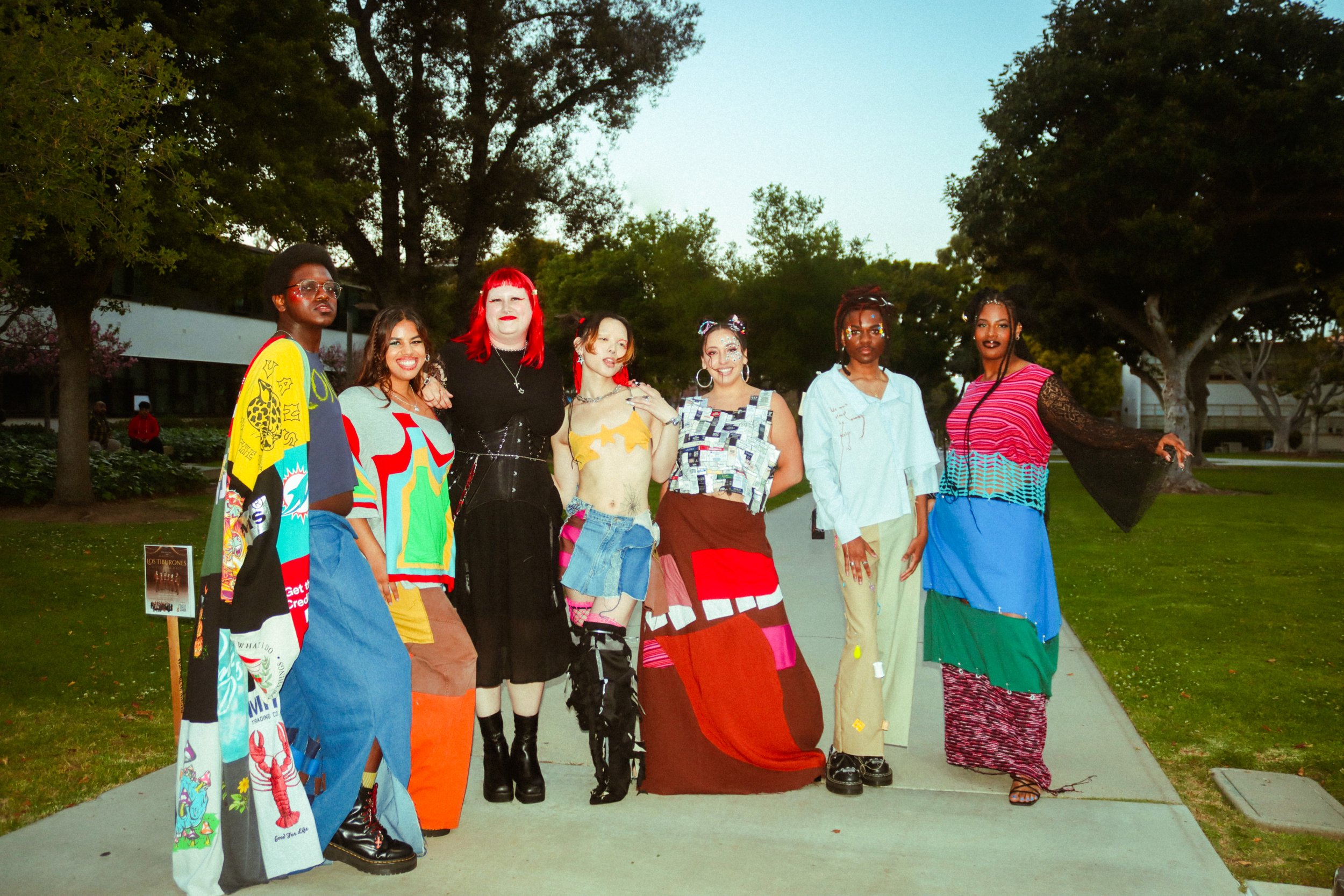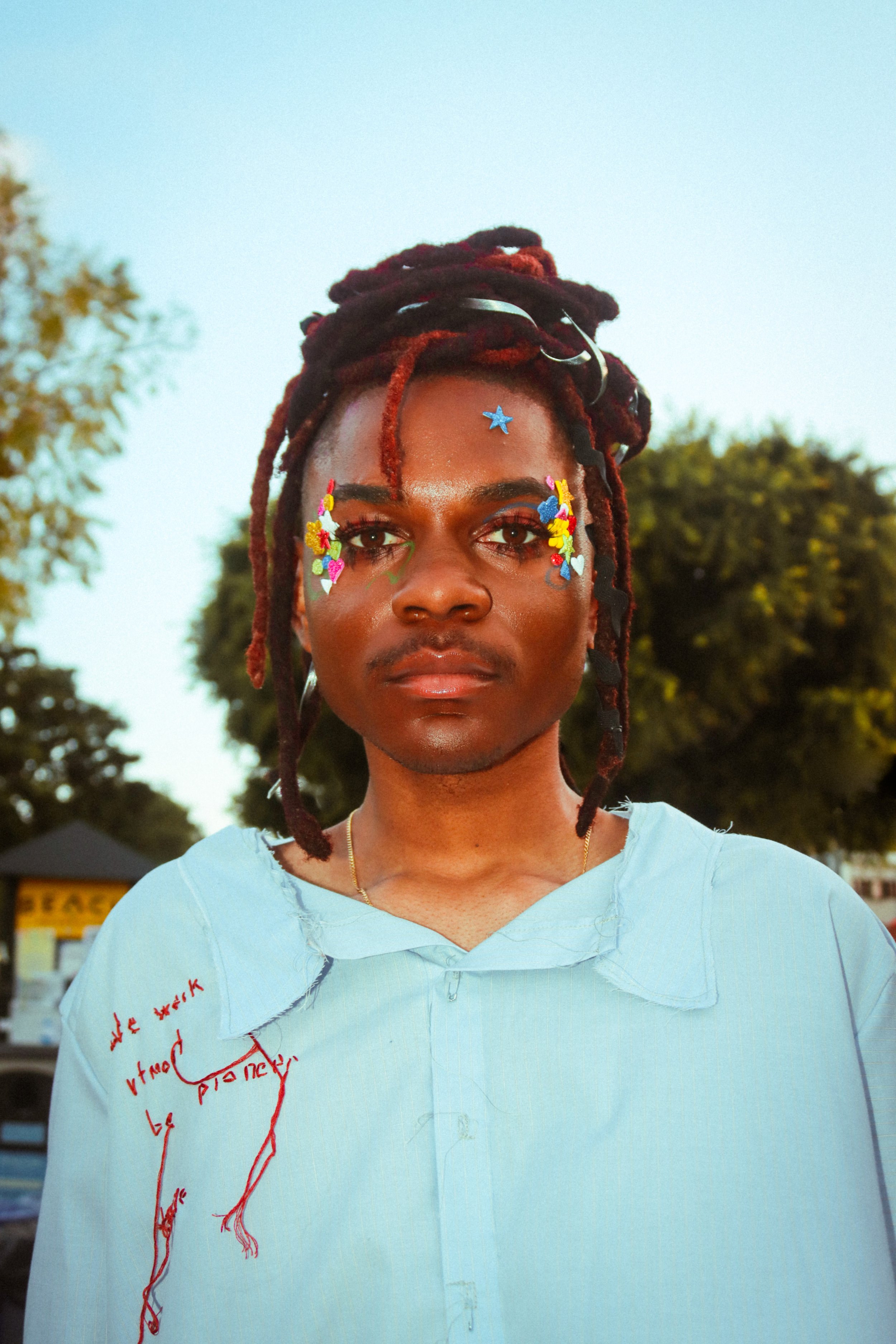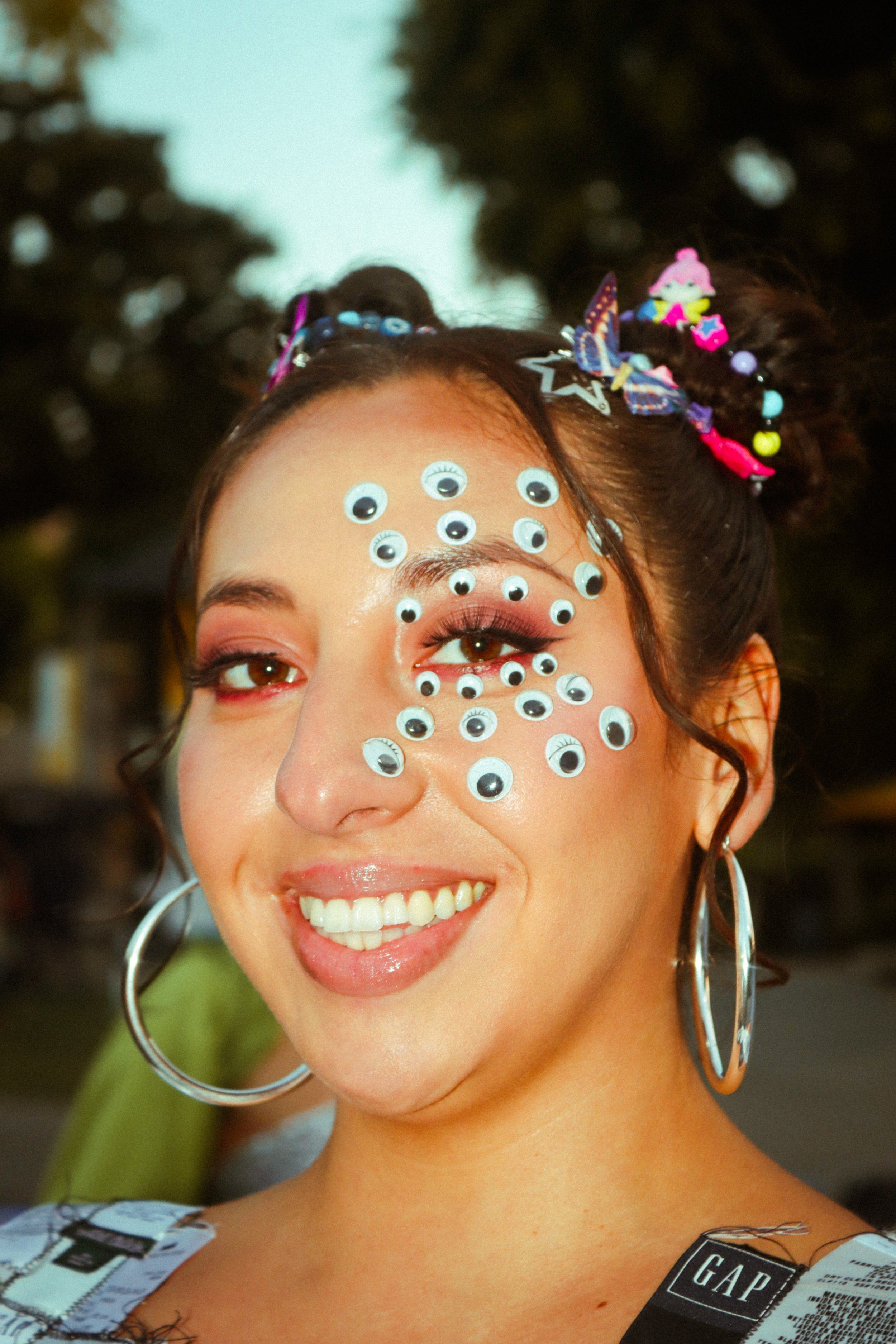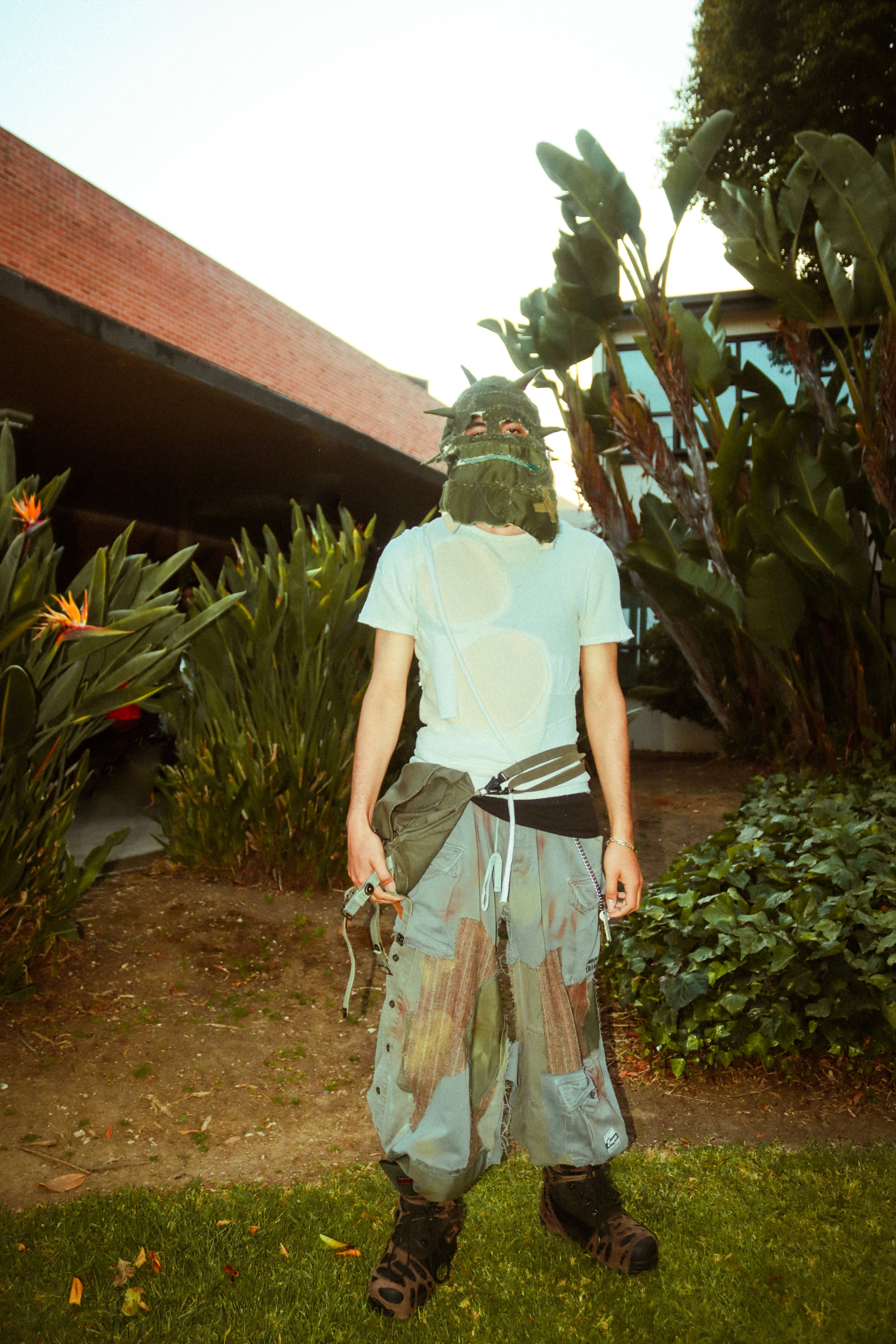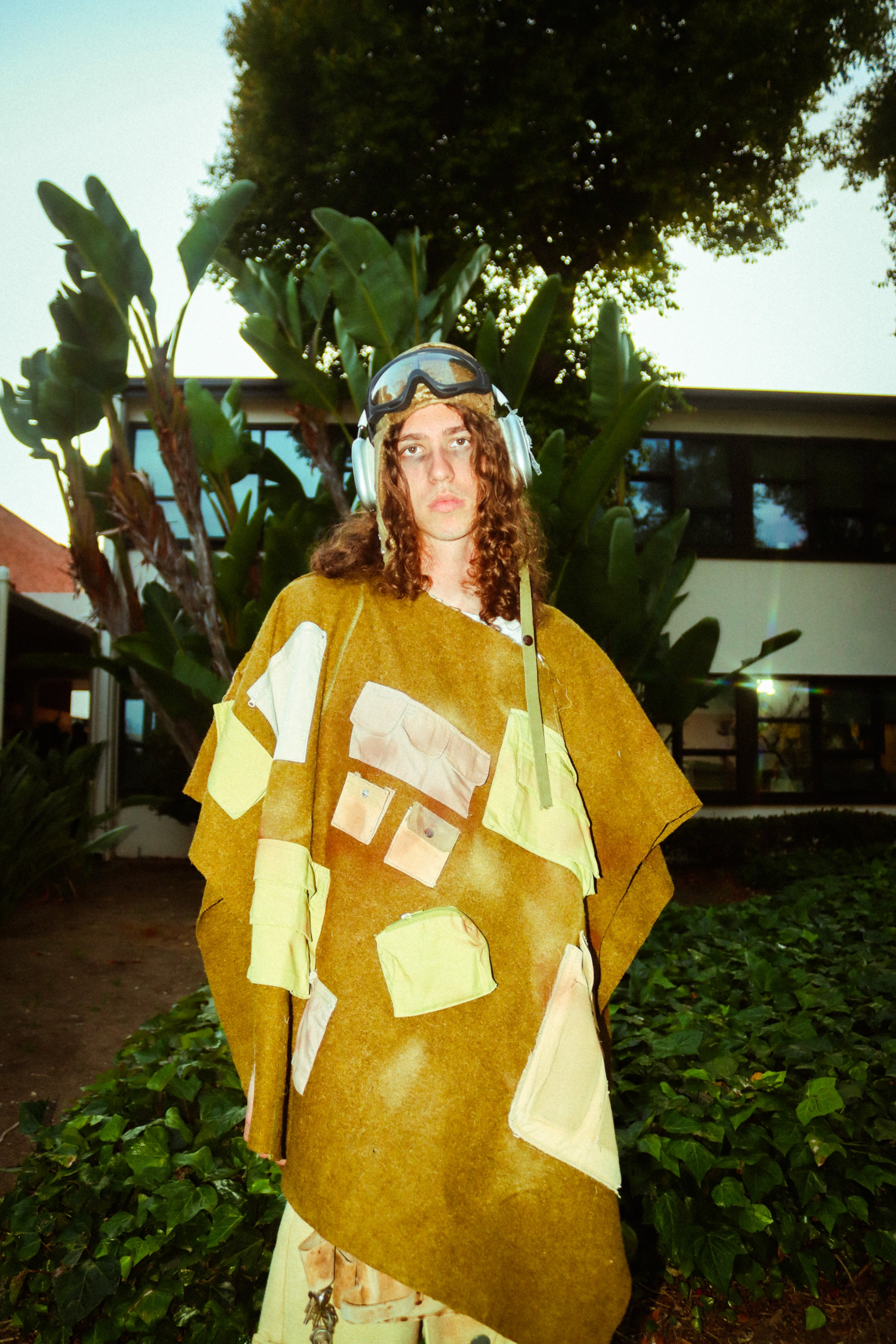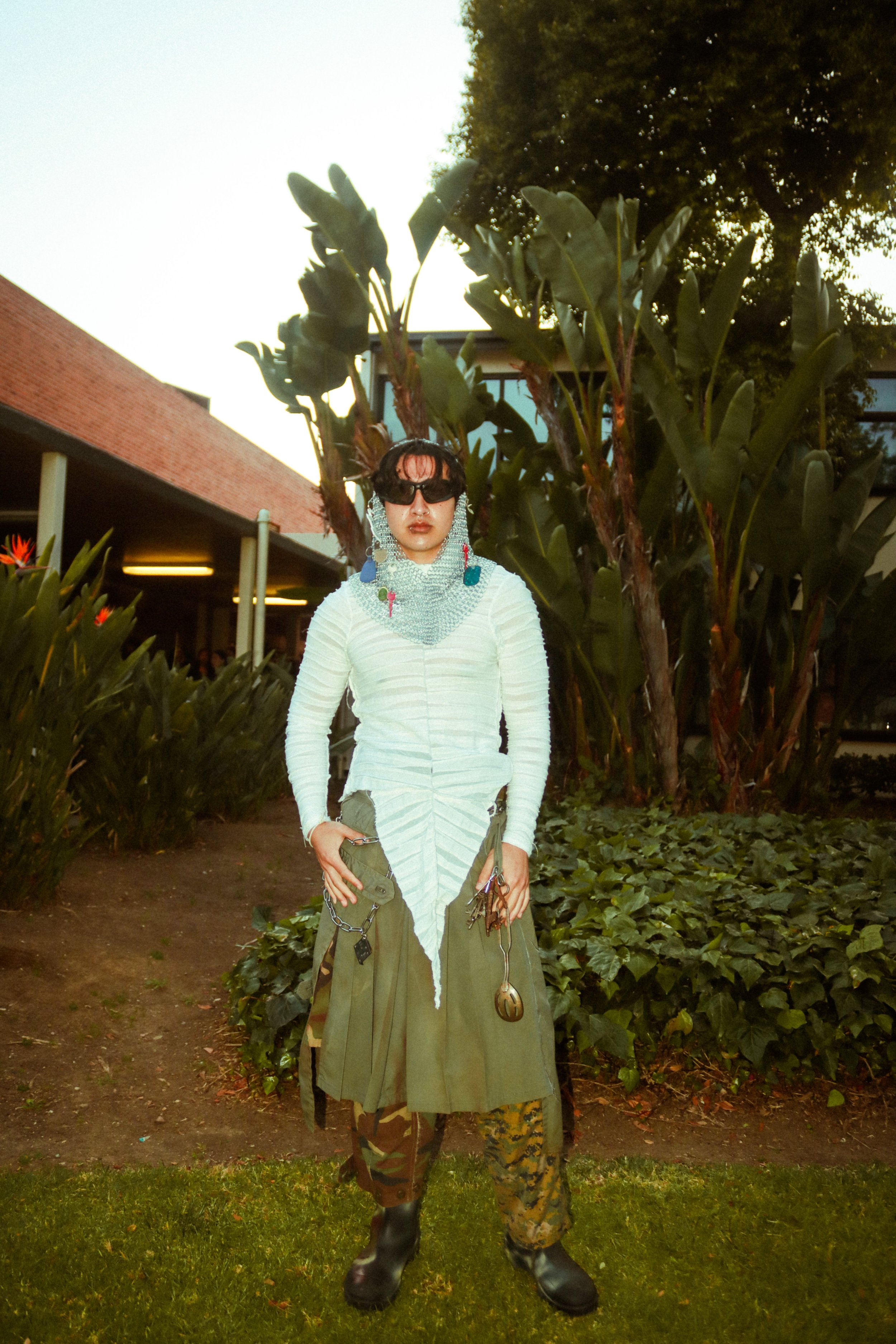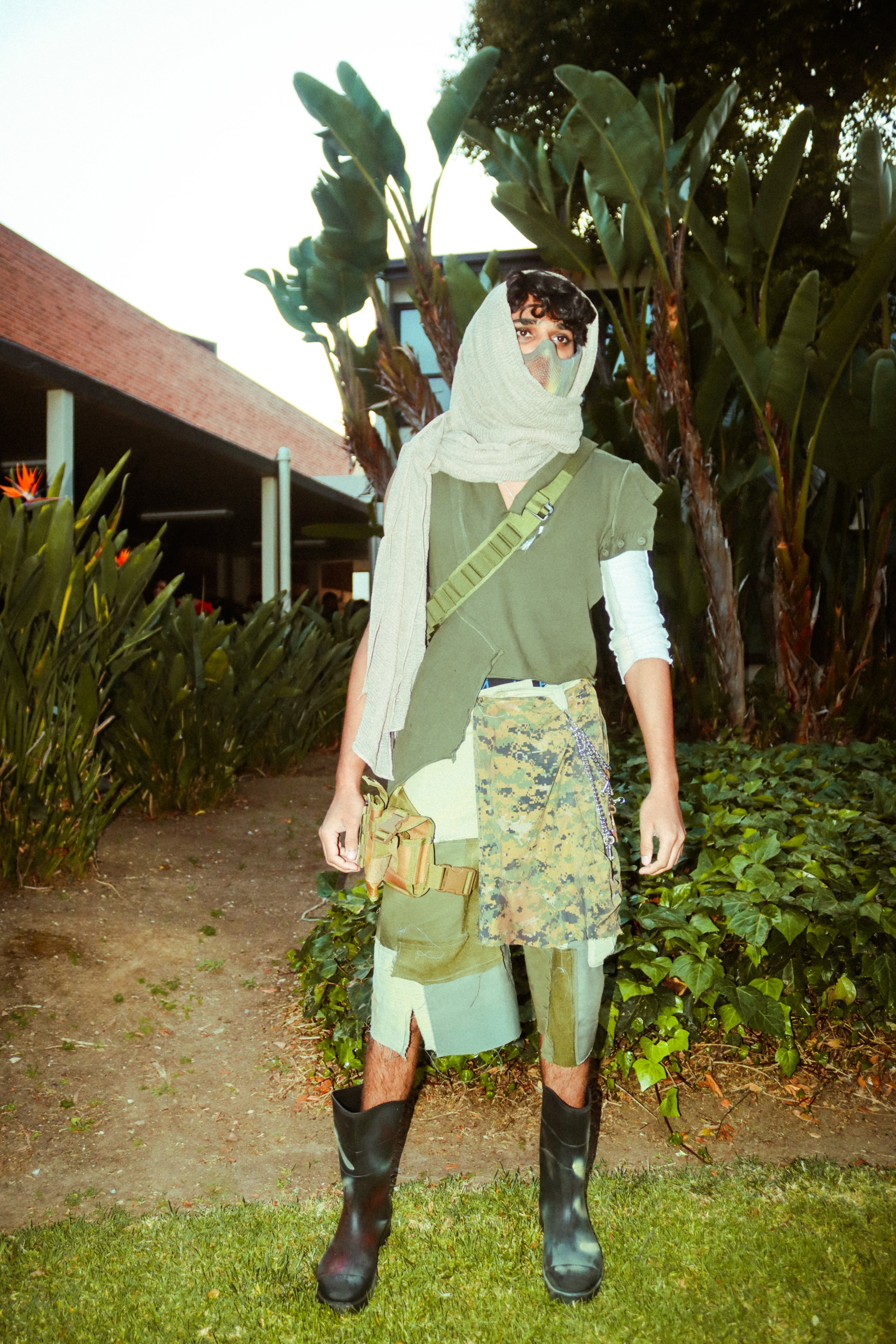From Waste to Wardrobe
Photo of two of Watanabe’s designs at Campus Couture’s 2024 show on May 3rd. Photos by @__avvs__
The foul realities of fast fashion continue to impact the environmental well-being of our planet, but the rise of sustainable fashion designing aims to creatively ease this textile toxicity. Designers Lissa Balenkowski and Sarah Watanabe are implementing several sustainable aspects into their designs for CSULB’s student-run annual fashion show, Campus Couture. To address overconsumption and landfill pollution, these designers aim to transform what was once deemed as trash, into functional and fashionable treasures.
As fashion trends are swiftly and constantly evolving, landfills continue to accumulate low-quality clothing, which prompted fourth-year fashion merchandising major Lissa Balenkowski to ponder: “How can we survive in the future if the world is overrun by textiles?” Inspired, Balenkowski created six outfits for the fashion show, highlighting overproduction and overconsumption in fast fashion’s throwaway culture.
Photos of Balenkowski’s collection at Campus Couture’s 2024 show on May 3rd. Photos by @__avvs__
Every item incorporated into their garments is sustainably sourced. From the fabrics, threads, zippers, patches, and other unconventional notions added as finishing touches, Balenkowski sourced a majority of these items from friends and local thrift shops.
“I have a little bowl that I've been using to collect random charms, jewelry, empty spools of thread– anything that’s broken or is going to be thrown away,” they said. As someone who prefers to think outside of the box rather than relying on traditional art forms, Balenkowski says, “I will take every piece of garbage and repurpose it.”
Balenkowski is excited to showcase a patchwork top made entirely from logo tags found sewn on the back of clothing. Inspired by the mountains of textiles piling up in landfills, they aim for this garment to symbolize environmental degradation caused by excessive clothing waste.
Photos of Balenkowski’s collection at Campus Couture’s 2024 show on May 3rd. Photos by @__avvs__
“I love the concept of taking the most mundane parts of a garment and repurposing them,” they said. “We live in a society where we constantly consume and we’re always being pushed to buy more in fashion. There used to be four seasons, and now it’s changed to this ‘52 micro-seasons’ thing…it’s kind of terrifying.”
Designer and third-year fashion design major Sarah Watanabe is basing her Campus Couture collection on what fashion would be like in a dystopian society.
“In a post-apocalyptic world, there wouldn't be any new designs being made, you’d have to just work with what you can find that’s already out there,” said Watanabe.
Photos of Watanabe’s collection at Campus Couture’s 2024 show on May 3rd. Photos by @__avvs__
Like Balenkowski, Watanabe likes embellishing her garments with atypical trinkets, adding oddities like keys into her designs.
“I like to look through eBay and bid on people’s random stuff like vintage pins, patches, buttons, keys– pretty much anything you’d find in your grandpa’s junk drawer,” she said.
A design that Watanabe is eager to showcase is an upcycled medieval chainmail hat adorned with various keys and keychains. Alongside her admiration for decorating with knick-knacks, Watanabe also incorporates hats into every design. Thinking back to the hats she made for her first fashion show at her community college, Watanabe emphasizes her niche for hats.
“When I start designing, I always think of hats first,” she said. “There’s never hair out in my designs.”
Photo of Watanabe’s models walking at Campus Couture’s 2024 show on May 3rd. Photo by @__avvs__
Watanabe and Balenkowski are among numerous designers integrating sustainability into their work. By sourcing materials from thrift stores, second-hand websites, and acquaintances, these designers stylishly showcase the art of upcycling while simultaneously highlighting the environmental stress of fast fashion.
With anticipation of their collection creating an impact on the audience, Balenkowski says, “When people see my designs, I want them to think about what they wear, how they care for their clothes, and consider what happens to them after they’ve been thrown out.”


